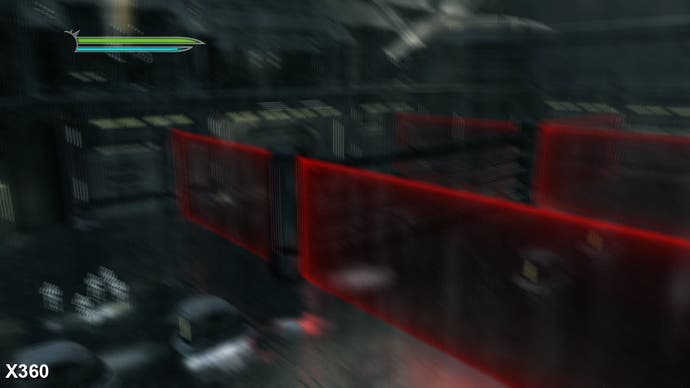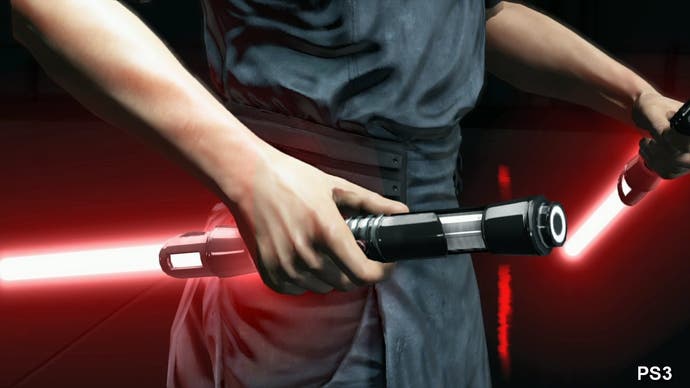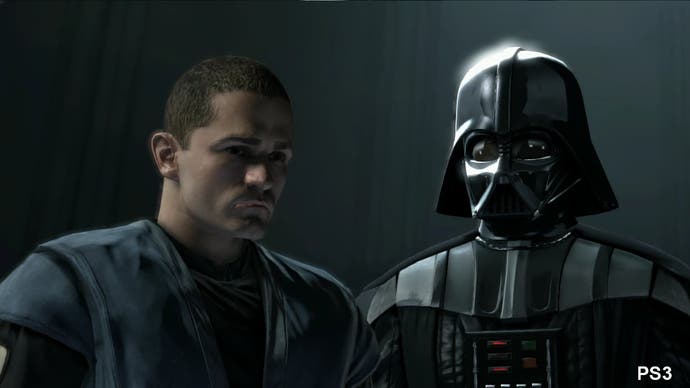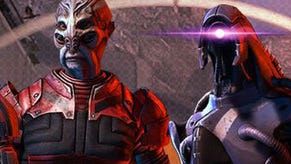Star Wars: The Force Unleashed II PS3/360 demo showdown
"I've been looking forward to this."
Star Wars: The Force Unleashed II didn't register on our radar until developer Dmitry Andreev revealed his exceptional work with frame-rate upscaling during this year's SIGGRAPH. The final game doesn't ship with the new tech, but it's still shaping up to be an exceptionally handsome release based on the quality of the demo code released on PlayStation Network and Xbox Live this week.
It's been a long while since we played the original Force Unleashed, but a quick review of our comparison video reminds us of how some exceptionally cool gameplay concepts didn't quite translate into the game we wanted it to be, owing to some fairly rough tech. The sequel radically redresses this situation: deferred rendering, custom anti-aliasing, platform-specific optimisations... It's really impressive stuff from a technical perspective.
While the pseudo-60FPS frame-rate upscaling effect might not have made it into the final code, the high-quality motion blur that LucasArts implemented is still a remarkably good effect, with both camera- and object-based implementations making the game look much smoother than the average 30FPS release. In Dmitry Andreev's presentation it was made clear that parallelising the motion blur processing over five SPUs results in a more finely filtered effect, and this is something that's readily apparent in the demo.
Xbox 360 runs with fewer samples, though it's only really on fast action involving the whole screen that the reduced fidelity of the effect is apparent. However, in still screens we also see superior edge-detection on PS3, which is almost certainly the result of using CPU to produce the effect over the GPU version used on 360.




Another interesting difference we see between the two versions is the implementation of the all-important lightsabers, with the PS3 having "fatter" blades and a wider glow effect compared to a slightly different, thinner implementation on 360. Amusingly it is reminiscent of the difference between the rotoscoped laser swords in the Holy Trilogy and the CGI effects seen in the newer prequels.


Off-loading graphics work from the GPU onto the CPU is a common theme in extracting improved performance from the PlayStation 3, and by parallelising the tasks over multiple SPUs not only do you get a higher-precision effect but often it is faster than the graphics chip to boot.
But The Force Unleashed II is fascinating in that there are clear advantages to the Xbox 360 version of the game too. The biggest plus point is clearly performance. The Force Unleashed II demo gives us the chance to compare both like-for-like scenes and gameplay from the same areas, and the results are pretty conclusive - a capped 30FPS and the introduction of screen-tear when frame-rate dips. In these cases it's the 360 version that tears less and has fewer torn frames.
The Xbox 360 game also has some visual advantages of its own over and above the PS3 version, as you can see in this brace of comparison images - we see additional texture detail on the protagonist's face on 360 with the added wrinkles absent on the Sony platform. This latter detail is a bit of a puzzle as it takes place in the training environment – an area that is not exactly the most taxing on RAM.


Update: We previously noted a difference in wet-shaders between the two versions, but the difference is very easy to explain - the character dries off! There's platform parity here after all.
All told though, the demo strongly suggests that Star Wars: The Force Unleashed is going to be an impressively good-looking game, though LucasArts chose wisely by using Kamino as the demo level: the lack of high-contrast edges means we don't get to see how the custom anti-aliasing solution stands up in challenging conditions, while the muted colour scheme of the level also works fairly well in masking much of the screen-tear when it does manifest.
The full game's set for release on 29th October, but in the meanwhile the demo is seriously worthy of some attention.






